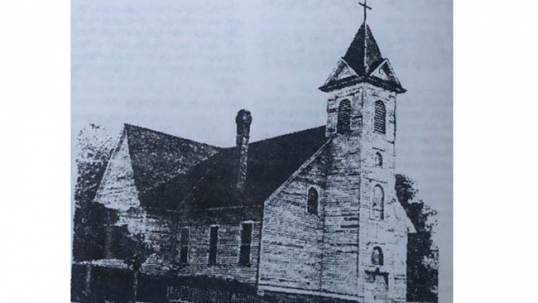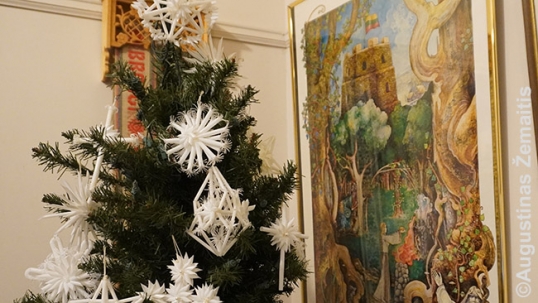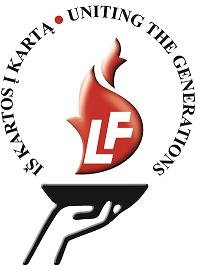Kansas
Kansas City Lithuanian community developed in Kansas City around 1900 as Lithuanians immigrated to staff some of the largest stockyards in the world, second only to Chicago by some accounts.
The hub of their community was St. Casimir Lithuanian church which they managed to open having acquired a small church from the Baptists (1912) where they also built a Lithuanian parish school (early 1920s) and had other activities.

Empty lot where St. Casimir Lithuanian church of Kansas City stood (Broadview and Ridge Ave)
The church had a sad history, however: while 150 Lithuanian parish members had lots of plans and were raising money to build a larger church, there came a bishop who disapproved of the ethnic churches and merged the Lithuanian and Slovak churches in 1947. The Lithuanian church was closed and demolished – only an empty lot sits there ever since. With the money they raised for the parish essentially taken away, many Lithuanians dispersed from the district.

Old image of Kansas City Lithuanian church (since demolished)
The lack of Lithuanian church by the late 1940s also meant that the First Wave Lithuanian immigrants of ~1900 were not joined by the Soviet Genocide refugees after World War 2 as there were no Lithuanian institutions to invite and help them. Therefore, the community was not replenished.
In 1980, however, rather uniquely, Lithuanians and their descendants reestablished a club, albeit without any building. They concentrate on activities such as a Lithuanian folk dance group ("Aidas"). These are conducted in English, now the lingua franca for Lithuanians who were spread all over Kansas City for a long time and thus assimilated language-wise into the wider American community.
In 1988, Strawberry Hill museum was established in a building near a still-surviving Croatian church of St. John the Baptist that had previously served as an orphanage by Croatian nuns and previously was a house of an affluent family (built 1887). The goal of this museum is to collect and present materials of ethnic communities from the area. Former cells of the nuns have been converted into „ethnic rooms“, one of which is a Lithuanian room. Tours in the museum present the stories of these ethnicities, as well as those of the affluent family life and orphanage life, that way introducing various sides of the Strawberry Hill interethnic neighborhood. Lithuanian club functions (such as Independence Day or Kūčios) also take place in this museum.

Strawberry Hill Museum
The Lithuanian room of the Strawberry Hill museum includes ethnic artifacts and artworks.

The Lithuanian exhibit of Strawberry Hill museum includes Christmas tree toys made of drinking straws (a Lithuanian-American tradition - people back in Lithuania used natural straw for this) as well as a highly symbolic painting by Danas, representing Lithuania

Lithuanian Room of the Strawberry Hill Museum in Kansas City
Furthermore, the Lithuanian community managed to recover the bell of St. Casimir church as, while it had been initially relocated to another church, it was no longer used at the time. The bell was relocated into Wyandotte County Museum where it is located prominently beyond the entrance with the descriptions of St. Casimir church. The Lithuanians who donated for the bell are cast on the side of the bell.

St. Casimir bell at Wyandotte County Museum






Leave a comment